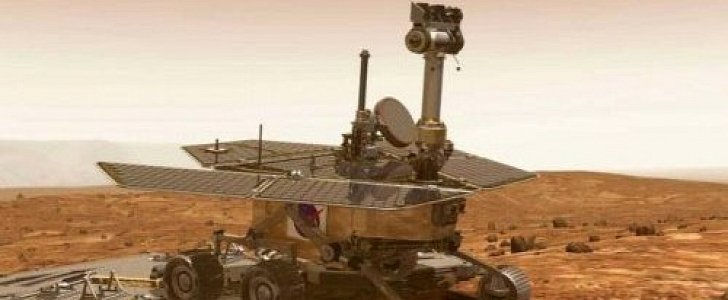At the beginning of the month, NASA’s Opportunity Rover celebrated 14 years since its landing on the Red Planet, nearly an equal number of years more than the initially planned mission. This past weekend, the little Rover-that-could marked yet another milestone in its historic mission.
On Saturday, NASA announced that Opportunity witnessed a Martian sunrise for the 5,000th time, making it one of humanity’s most enduring machines on an alien world. After all that time spent in the Martian dust, Martian winter and who knows what else, the Rover continues its mission, long after the planned 90 days of operation expired.
"Five thousand sols after the start of our 90-sol mission, this amazing rover is still showing us surprises on Mars," said Opportunity Project Manager John Callas, of NASA's Jet Propulsion Laboratory.
"We've reached lots of milestones, and this is one more, but more important than the numbers are the exploration and the scientific discoveries."
Martian days, called by NASA sol, are 40 minutes longer than your avergae day on planet Earth. According to the space agency, Opportunity’s day No. 5,000 started on Friday, Universal Time.
The Rover is solar-powered, hence NASA did not expect it to survive the low-light winter conditions. Still, Rover is currently 45 kilometers (28 miles) away from its landing site, having stayed active throughout the mission. That means it travelled 3.2 km per year, or nearly two miles.
Opportunity, as his brother Spirit, is a six-wheeler vehicle that weighs 180 kg and stands at 1.5 m high, 2.3 m wide and 1.6 m long. It uses a rocker-bogie suspension system that allows each of the rover's wheels to remain attached to the ground, regardless of the type of terrain.
Top speed of both vehicles is 50 mm/second (0.18 km/h), making them the single slowest, most expensive self-propelled vehicles ever made by man. In the 14 years it has spent on Mars, Opportunity traveled 45 kilometers (28 miles).
"Five thousand sols after the start of our 90-sol mission, this amazing rover is still showing us surprises on Mars," said Opportunity Project Manager John Callas, of NASA's Jet Propulsion Laboratory.
"We've reached lots of milestones, and this is one more, but more important than the numbers are the exploration and the scientific discoveries."
Martian days, called by NASA sol, are 40 minutes longer than your avergae day on planet Earth. According to the space agency, Opportunity’s day No. 5,000 started on Friday, Universal Time.
The Rover is solar-powered, hence NASA did not expect it to survive the low-light winter conditions. Still, Rover is currently 45 kilometers (28 miles) away from its landing site, having stayed active throughout the mission. That means it travelled 3.2 km per year, or nearly two miles.
Opportunity, as his brother Spirit, is a six-wheeler vehicle that weighs 180 kg and stands at 1.5 m high, 2.3 m wide and 1.6 m long. It uses a rocker-bogie suspension system that allows each of the rover's wheels to remain attached to the ground, regardless of the type of terrain.
Top speed of both vehicles is 50 mm/second (0.18 km/h), making them the single slowest, most expensive self-propelled vehicles ever made by man. In the 14 years it has spent on Mars, Opportunity traveled 45 kilometers (28 miles).

